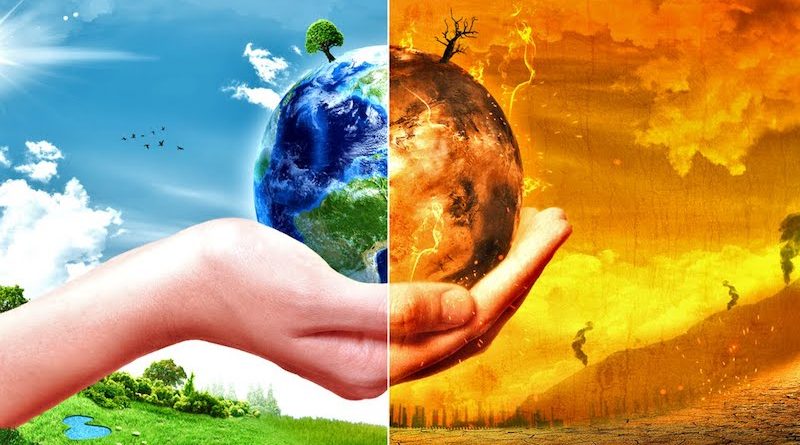In Short : Addressing poverty and combating climate change can be mutually reinforcing goals. Sustainable development strategies, renewable energy initiatives, and equitable policies can uplift impoverished communities while contributing to environmental resilience and mitigation efforts, creating a harmonious intersection between social and environmental goals.
In Detail : Building on recent success in reducing extreme poverty, it’s time to aim for economic “empowerment,” which ensures that everyone can meet their essential needs. Improving minimum living standards has to be tackled along with climate change. A successful net-zero transition will need to be affordable and inclusive. Economic growth and business-led innovation can unlock historic progress on both journeys.
When it comes to lifting people out of poverty, how do we define minimum acceptable living standards? For years, poverty has been measured against the World Bank’s $2.15 per day benchmark. In one of history’s biggest achievements, a billion people worldwide climbed above this line in recent decades.
Now it’s time to go further — not only by helping the 730 million people still in extreme poverty but by creating the foundations that would give everyone a shot at thriving.
Research by the McKinsey Global Institute argues for setting a global floor of $12 per person per day (in purchasing power parity terms), a level at which individuals can afford the full range of simple basics and begin to save.
Setting this “empowerment line” almost six times higher than the extreme poverty line is ambitious but in line with many of the aspirations enshrined in the UN’s Sustainable Development Goals. It is premised on everyone having the spending power needed for adequate nutrition, education, healthcare, housing, water and sanitation, energy, communications, clothing and a modest savings buffer. When people can meet these needs sufficiently, they can begin to exercise more choices about where and how they live; they can also invest in themselves to become more productive.
Aiming for empowerment
Some 4.7 billion people worldwide are not fully at this point. About 2.5 billion are in Asia, and another billion are in Africa. Yet even in advanced economies, 15% to 20% of the population, about 300 million people in all, are still below the relevant threshold of empowerment in these societies. While most are not counted as “poor” by the World Bank’s line or their own national poverty lines, they still struggle to make ends meet.
Getting everyone to full economic empowerment would require a cumulative boost in consumption of some 40% on average, or some $37 trillion worldwide cumulatively over the next decade.
Climate change complicates poverty alleviation
But this challenge does not exist in a vacuum. The clock is also ticking on climate change. The recent COP28 conference underscored the need for faster action to lower emissions by transforming energy systems, industry, mobility and buildings.
Getting on a net zero by 2050 trajectory entails a significant step-up in spending on low-emissions technologies to just over $40 trillion over this decade.
The McKinsey Global Institute estimates that it would take some 8% of global GDP each year to address empowerment and the net zero transition in tandem and in full. Developing countries account for 80% of the world’s empowerment gap — and their governments are keenly aware that the daily stress of making ends meet is the foremost existential issue for their citizens.
Advanced economies have smaller empowerment gaps but larger challenges to get to net zero. Many large middle-income countries face large gaps on both fronts.
What market forces can do
The enormous cost of achieving both “moonshot” goals is not solely down to government spending, however. In fact, economic growth and business-led innovation can unlock tremendous progress on both fronts.
On the empowerment side, growth is the engine of prosperity, particularly in developing economies. Boosting productivity by creating new products, industries and business models can support better-paying jobs. If employers can equip workers with the skills to take on those roles, some two-thirds of the empowerment gap could be addressed within the coming decade.
On the net zero side, economic growth has more complicated effects. Growth generates the necessary financial resources needed for climate finance. Our research finds some $10 trillion of opportunities to invest in low-emissions technologies that are cost-competitive today or will be soon. Of course, growth often raises emissions, too. The world will need to double down on deploying low-emissions alternatives to make up for this effect; this cannot be a reason to forgo growth and ask the world’s poor to defer their desire for more secure and comfortable lives. To balance these imperatives, the climate transition must become more affordable, and the most vulnerable households would need to be cushioned from any potential disruptive effects.
While growth and innovation are potent tools, governments, multilaterals and philanthropies have critical roles on the journey toward greater prosperity and net zero.
Addressing the residual gaps would take some public capital, blended finance and bolder policy innovation in everything from affordable housing to carbon pricing. Private actors, governments and nonprofits must combine their capabilities and expertise, thinking expansively about what this moment requires.
The progress we make for people and the planet right now, in this decisive decade, will shape our world for generations to come.

